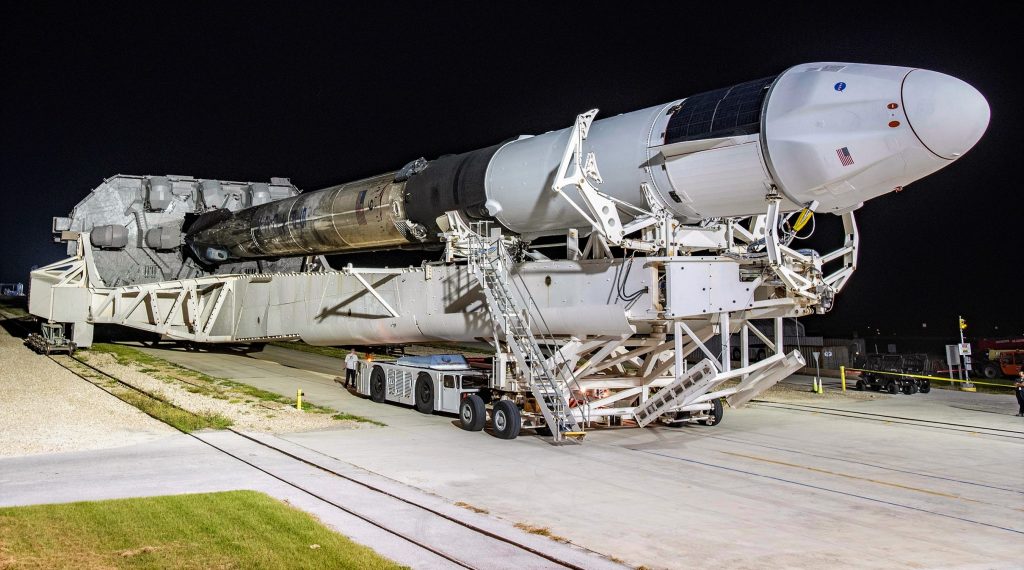For the first time in more than nine weeks, SpaceX has completed a routine Falcon 9 preflight test known as a static fire and verified that the rocket is ready to launch later this week.
Save for at least one booster qualification test completed at SpaceX’s McGregor, Texas development facilities, Falcon 9’s August 25th static fire is the first since June 22nd. The upgraded Cargo Dragon space station resupply mission the rocket will support will also be SpaceX’s first launch since June 30th – the company’s longest hiatus between launches since a three-month pause that began two years ago.
Now, just a few days before that drought is expected to end, a SpaceX executive has partially explained why the company hasn’t launched a single Falcon rocket in ~60 days after completing a record 20 orbital launches in the first half of 2021.
Speaking at the 2021 Space Symposium on August 24th, SpaceX President and COO Gwynne Shotwell revealed that the company had chosen to pause Starlink missions (representing the vast majority of its 2021 launches) and focus on preparing a new generation of satellites for flight. Believed to be called Starlink V1.5, those new satellites represent a relatively small design change save for one crucial addition: multiple lasers.
All the way back in mid-2018, SpaceX launched its very first pair of Starlink prototype satellites – spacecraft that largely functioned as expected and provided a wealth of data but were almost nothing like the Starlink V0.9 and V1.0 spacecraft SpaceX would eventually start launching in 2019. Nevertheless, they did carry sets of small lasers generally known as optical intersatellite links or OISLs for short. Not radically dissimilar to the hundreds of thousands of miles of fiber optic cables that make up the backbone of the internet, lasers operating in the vacuum of space can effectively mirror the extraordinary bandwidth and performance offered by fiber connections – but wirelessly.
Instead of carefully insulated cables filled with tiny threads of glass, which really just serve as a controlled environment for light-based communications, OISLs enable a similar feat by replacing cables with extraordinarily precise mechanisms capable of aiming lasers with sub-millimeter precision from dozens or hundreds of miles away. As a result, laser interlinks are fairly complex and expensive devices – not something currently economical to install on thousands of satellites mainly focused on affordability.
SpaceX, of course, has wanted to install unprecedentedly affordable laser interlinks on thousands of Starlink satellites for as long as the constellation has been publicly discussed. If realized, it would create an extraordinary orbital mesh network that would allow Starlink to self-route a large portion of user communications without the need for a colossal network of tens of thousands of ground stations covering every inch of Earth – land, sea, ice, and all. A Starlink constellation with near-universal laser interlinks could also potentially allow the constellation to not only match – but beat by a large margin – the latency of best-case terrestrial fiber-optic connections.
After effectively completing Starlink’s first ‘shell’ of satellites earlier this year, SpaceX shifted its focus to preparing for polar Starlink launches from both its west and east coast facilities. While the first shell lacked interlinks entirely, SpaceX appears to have decided that all polar Starlink satellites will be launched with its own custom-built space lasers, even if that means delaying Starlink launches until those lasers are ready for action. Due to the fact that the vast majority of SpaceX’s launches as of late have been its own Starlink missions, the company’s Falcon rockets simply haven’t had anything to launch.
Cargo Dragon 2 capsule C208 and Falcon 9 booster B1061 head to Pad 39A. (SpaceX)C208, the first Cargo Dragon 2 capsule ever built or flown, is on track to smash SpaceX’s orbital spacecraft turnaround record. (SpaceX)
That should change on August 28th, when a thrice-flown Falcon 9 booster launches a refurbished spacecraft on its second orbital space station resupply – a first for SpaceX’s upgraded Cargo Dragon 2 vehicle. A Shortfall of Gravitas (ASOG), SpaceX’s newest drone ship, will also be supporting its first Falcon landing ever as part of CRS-23, hopefully recovering Falcon 9 booster B1064 for a fifth launch later this year.
Tune in around 3:20am (07:20 UTC) on Saturday, August 28th to watch SpaceX’s first launch in two months live.
The post SpaceX Falcon 9 rocket fires up for the first time in nine weeks appeared first on TESLARATI.
Source: TESLARATI
Read More
